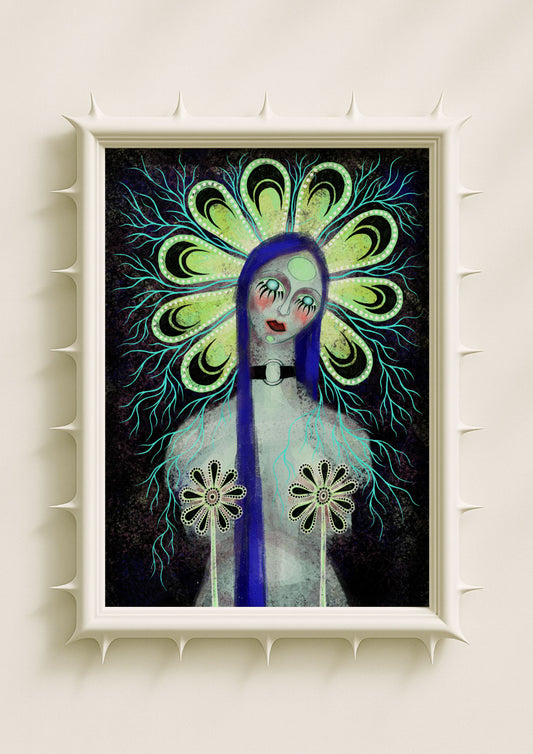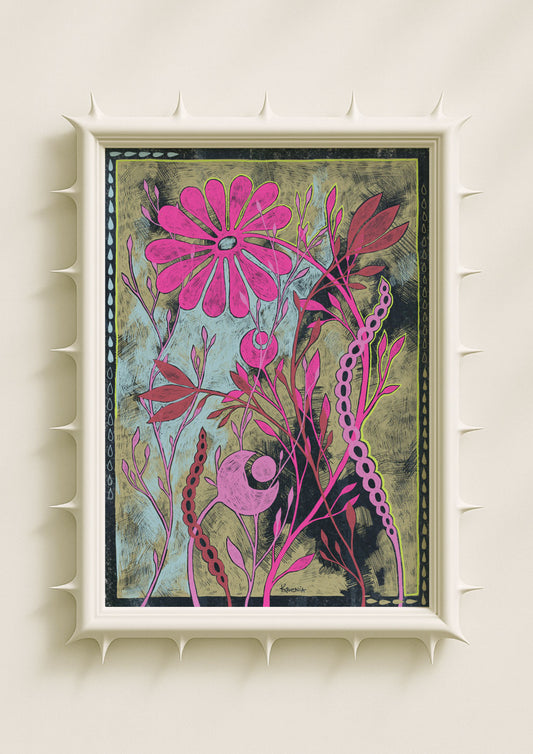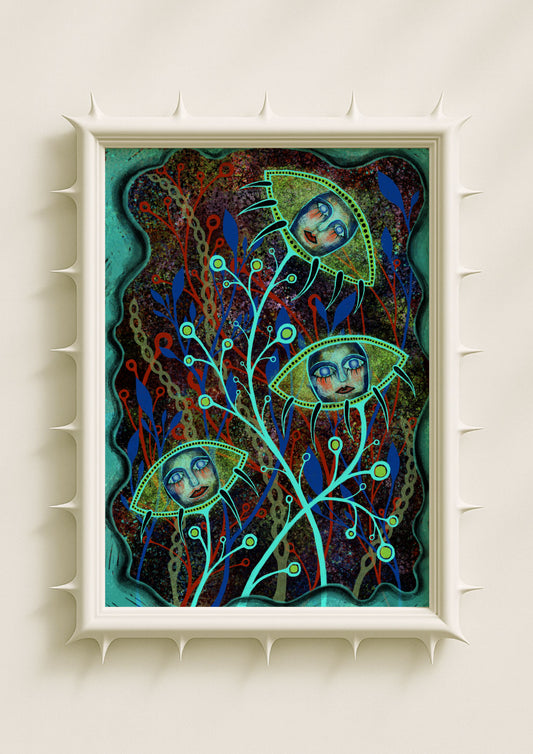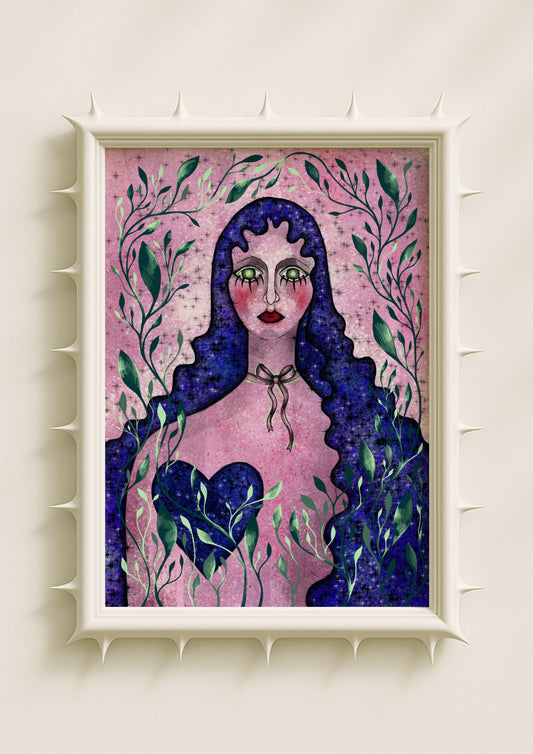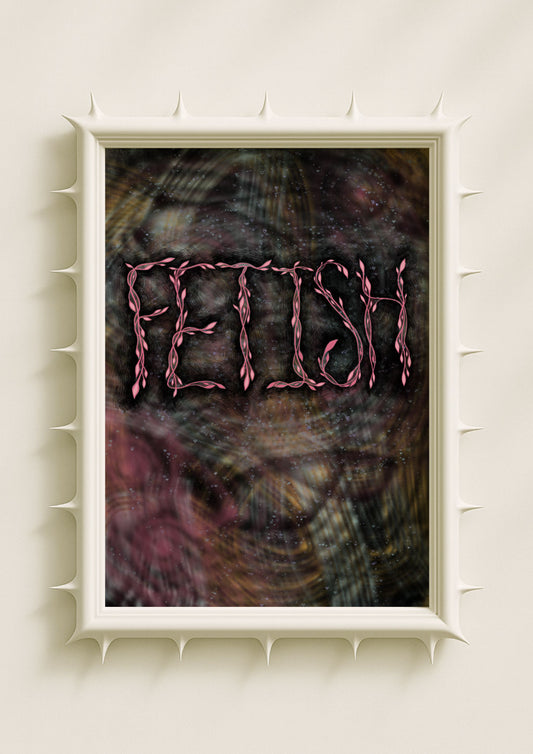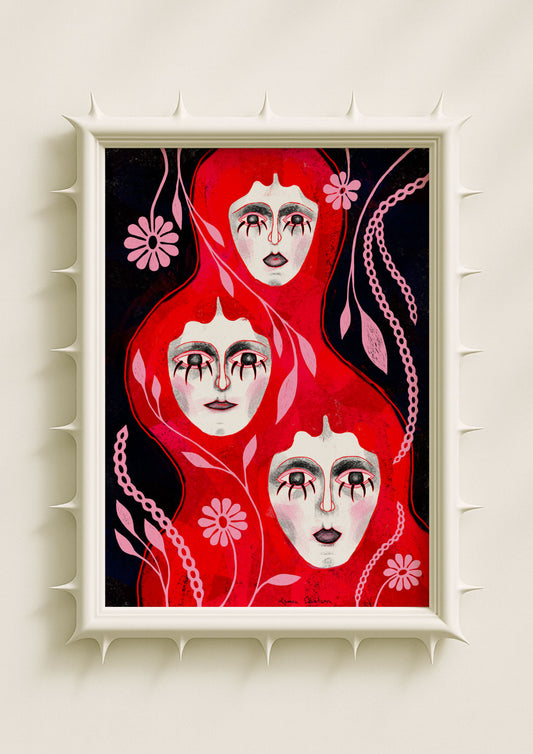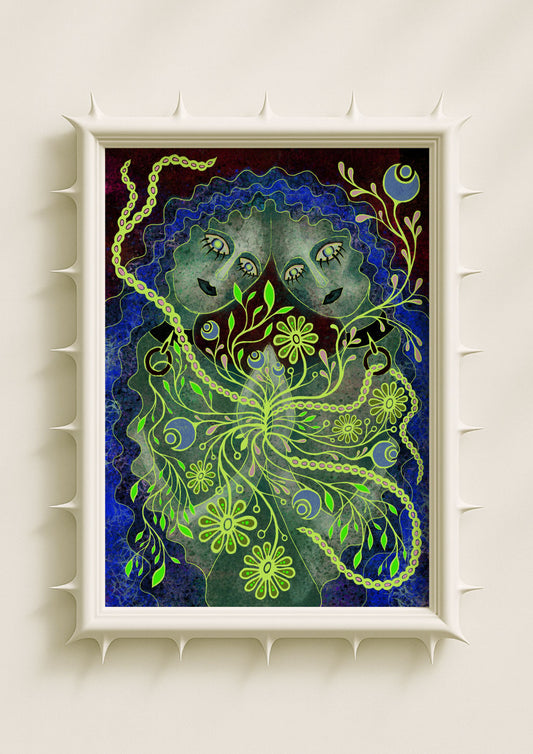When Colours Feel Like Atmosphere Instead of Paint
In my artwork, colour is rarely applied as a flat decision. It moves, drifts, and transitions from one emotional register to another. These shifts don’t aim to mimic real lighting. Instead, they create an atmosphere — a dreamy, suspended mood where one hue dissolves into the next. The transitions feel soft and intuitive, like the way emotions blur together rather than existing in clear categories. Colour becomes a floating environment, something the viewer steps into rather than simply looks at.

The Power of Soft Gradients in Surreal Portraiture
Soft gradients allow the figure to feel weightless, as if they’re formed by light instead of line. When shades melt into one another — green into blue, purple into rose, red into shadow — the portrait moves away from realism and into emotional territory. These transitions interrupt the solidity of the face or flower and make them vibrate gently. They create a kind of dream logic, suggesting that the figure is in a state of becoming, shifting identity or mood with every soft shift in tone.
Colour Transitions as Emotional Movement
A dreamlike gradient is never just visual; it’s emotional motion. A transition from deep magenta to cold blue can feel like moving from tension into stillness. A shift from acid green to soft beige can feel like anxiety dissolving into clarity. These movements are intuitive, not literal. They allow the viewer to sense the emotional undercurrent of the scene. The colours behave like feelings: drifting, fading, deepening, or swelling without warning.

Creating Depth Without Hard Shadows
Instead of relying on realistic shadows, I use colour transitions to build depth. Soft shifts create curves, planes, and dimensionality without strict contouring. A face can appear to glow or recede simply through a transition from saturated pigment to misty wash. This method keeps the atmosphere dreamlike — depth appears, but it remains fluid. The artwork breathes rather than locking into rigid form.
The Dreamlike Tension of Unexpected Colour Pairs
Part of the surreal quality comes from pairing colours that would never blend in nature. Electric green drifting into lavender. Burnt orange dissolving into turquoise. These combinations challenge realism and push the viewer into a heightened emotional space. The transition itself becomes a narrative: two moods meeting, two energies touching, two identities coexisting. In their softness, they create tension — a quiet, shimmering contradiction.

Dissolving the Boundaries Between Figure and Background
My dreamlike transitions often blur the edges between the character and the space around them. The figure fades into the background, or the background seeps into the figure. This dissolution creates intimacy and surreal unity. The emotional state of the character bleeds into the environment, and the environment echoes the character’s mood. There is no hard separation — only a gentle exchange of colour and atmosphere, like breath.
Why Dreamlike Colour Transitions Feel So Alive
Colour transitions evoke movement even in still images. They suggest shifting light, drifting air, or internal transformation. They let the artwork feel as if it’s happening rather than finished. This sense of living motion aligns with the themes in my work: sensitivity, transformation, surreal identity, and emotional presence.
Dreamlike transitions allow the colours to speak softly, carry mood gently, and hold emotion without the need for narrative. They create the dream-world the artwork lives in — a place where feeling is fluid, beauty is unstable, and colour becomes the quiet pulse of the image.
